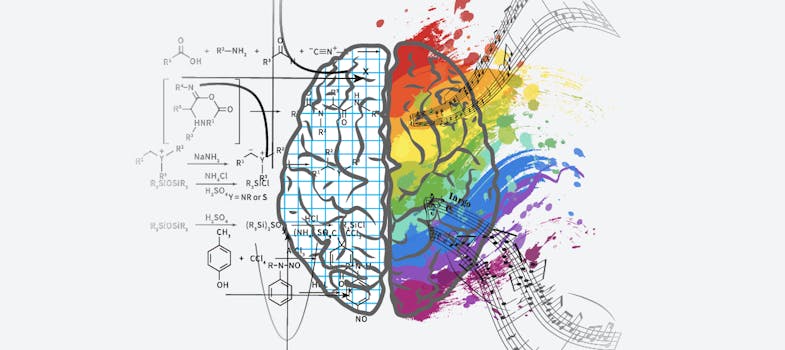Chances are that you've come across some claims on social media like "Taylor Swift is so creative – she's right-brained", or "Elon Musk is a left-brained logical genius". Is there any truth to such statements? And what do they mean?
Let’s take a very brief and simplified look at the historical origins of this phenomenon. You probably know that the human brain is divided into two hemispheres – left and right – with each being responsible for different functions. This is known as lateralization. It was first observed in the 19th century by French physician Paul Broca who discovered that damage to a specific area in the left hemisphere impaired speech production. Another area responsible for language comprehension was later discovered by German neurologist Carl Wernicke. The findings of these two scientists became the foundation of the theory of lateralization. It was later solidified by new evidence gathered mostly from brain injuries that occurred in accidents and during the two World Wars.
A game of two halves
The left hemisphere is usually associated with logical reasoning, analytical thinking, and language. Creativity, intuition, and spatial abilities are typically associated with the right hemisphere. Despite their specialized functions, the two hemispheres don't operate in isolation. They communicate through a bundle of nerve fibers known as the corpus callosum which allows for coordinated and coherent cognitive functioning. For example, while the left hemisphere may analyze the grammatical structure of a sentence, the right hemisphere can interpret its emotional tone.
Lateralization also extends to sensory and motor functions. Each hemisphere controls the opposite side of the body, a phenomenon known as contralateral control. For instance, the left half of your brain controls your right hand and vice versa.

Understanding brain lateralization has significant medical implications. Therapies for brain injuries can be tailored based on which hemisphere is affected, thereby optimizing rehabilitation outcomes.
It all seems pretty clear-cut: creative people must be right-brained, and logical persons must have a dominant left hemisphere. But is it really this simple?
You don't know the half of it
Until barely a hundred years ago, it was believed that both hemispheres of the brain worked independently, and that the left half was superior to the right. People then attributed right hemispheric dominance to women, criminals, and the insane. Thankfully, these misogynistic views have been largely overcome and replaced by more neutral scientific hypotheses based on actual observed facts.
Unfortunately though, the common perception of brain lateralization is still riddled with misconceptions and oversimplifications, especially in pop psychology – hence the myth that people are either "left-brained" or "right-brained". For starters, lateralization is not a one-size-fits-all concept; while there are general trends, individual variations are ubiquitous. Language functions are left-lateralized in some 95% of right-handed persons but only in 70% of lefties. And in some individuals, the lateralization is completely flipped – just as there are people who are born with their heart on the right side.
But even in people with textbook lateralization, the respective hemispheres don't work independently or one more than the other. Both halves of the brain work together in a highly integrated manner, and most cognitive tasks require the involvement of both hemispheres. This is emphasized by the brain's plasticity, meaning that if one hemisphere is damaged, the other can often compensate for the lost functions.
Moreover, recent research suggests that lateralization is not as rigid as once thought, with many functions being more distributed across both hemispheres than previously believed.
What to wrap your brain around

The lateralization of brain functions is a fundamental aspect of human cognition, reflecting the brain's ability to specialize and optimize its processes. Both hemispheres work in concert to produce the rich tapestry of human thought and behavior – but just as varied as humanity itself is, brains are not uniform.
So, if someone calls you right-brained like Taylor Swift or left-brained like Elon Musk, just be aware that this is at best a shorthand for some general personality traits without any real scientific basis – like zodiac signs. Whether you decide to ignore or address it, remember: if your brain takes sides, you probably won't know which.



